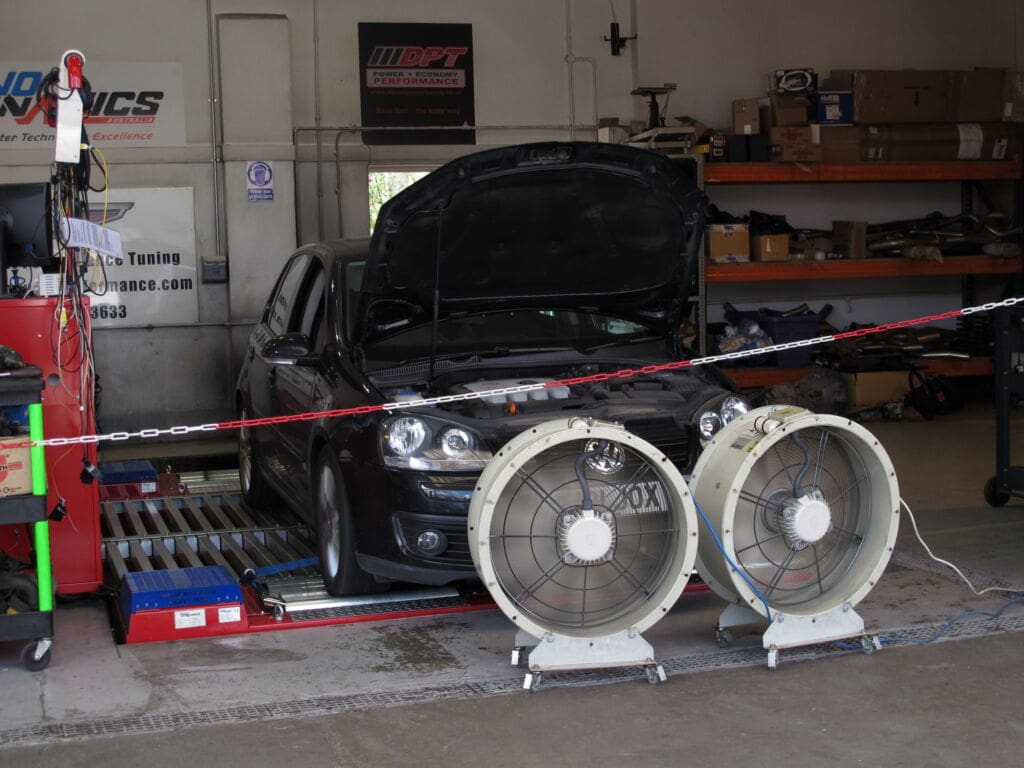
There was a time when tuning was the preserve of louts in modified Saxos, cruising around industrial areas to the beat of drum and bass. Now, though, tuning has become more mainstream, with the ability to improve not just performance, but also cut fuel consumption. You can even get tuning set-ups that prioritise torque, power or economy depending on your needs. And that’s especially useful if you want to tow.
For many, the method of choice has traditionally been the stage-one ‘remap’ – uploading fresh software to the engine control unit (ECU) in a bid to alter the engine’s behaviour. It’s relatively quick to do, and often involves little more than plugging in a laptop via the OBD port.
And if you’re wondering about stage-two remaps, they do exist, but they’re a bit more complicated. That involves actively changing parts of the engine’s hardware, such as turbochargers and exhausts, to squeeze out more power.
There is another way, though, and it’s called a tuning box. Simply plugging it in at sensor level allows it to alter the instructions sent out from the ECU, effectively providing the same effect as the remap, without actively changing the engine software.
“…before taking the plunge, do your research…”
Both do the same job, so choosing between the two will depend largely on your circumstances and what you hope to achieve. For example, a remap requires the ECU to be overwritten, and although it can be returned to factory settings, it requires much the same process as the original remap. If you are confident in the tuner and plan to keep the car for a long time, that’s no issue, but those paying for their car on finance, still within the manufacturer’s warranty period, or plan to sell the car soon, might prefer the tuning box that simply has to be unplugged for the car to revert back to factory settings.
By the same token, a tuning box could be reprogrammed to work with another vehicle, effectively allowing the driver to transfer it to a new car when it’s time for some new wheels. This might require an upgrade of the hardware, and certainly the software, but it will help to keep costs down when you’re considering changing cars.
As with all these things, though, it’s well worth taking the time to research what you’re signing up for. Making the decision between remap and tuning box will be pointless if you’re comparing a naff, one-size-fits-all tuning box with a top-of-the-range, detailed remap that gives you exactly what you’re after. And if you’re comparing an advanced tuning box with a hooky remap, you have much the same problem.
So before taking the plunge, do your research, and make sure you’re getting your information from the right places. Forums will often be a source of recommendations and horror stories in equal measure, while companies might try to push you down one route or another, depending on the product they are trying to sell you.
Of course, even if you’re diligent in your research, it isn’t always easy to know you’re getting what’s advertised. Some companies, though, will offer some sort of guarantee for a little extra peace of mind, while others will back up what they claim by putting your car on a dynometer, or rolling road, and you can see for yourself the figures that the car is achieving in terms of bhp and torque. If you’re looking for extra economy and you’re anxious to make sure you’re getting what you paid for, keep checking the consumption (using the receipt, odometer and some arithmetic, rather than the car’s trip computer) and work out an average economy figure. That way you can compare the economy before and after the upgrade.
© Motorworld Media 2023
Registered Office: 4 Capricorn Centre, Cranes Farm Road, Basildon, Essex. SS14 3JJ
Company Number: 8818356
Website designed by Steve Dawson